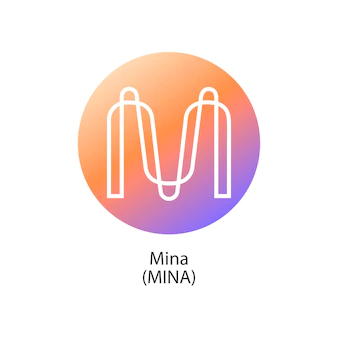
Coinposters
Mina (MINA): The World’s Lightest Blockchain

Most blockchains, from Ethereum to Tendermint, start small but can expand to thousands of terabytes over time. The degree of architectural decentralization in a blockchain increases with the number of nodes responsible for validating network transactions. In a conventional blockchain, each new block added to the chain raises the cost of running a full node. Mina Protocol, a bridge between the real world and crypto, aims to transform the blockchain sector with breakthrough technology that promises cheaper transactions at lightning speeds.
What is Mina?
The Mina Protocol (MINA) is a proof-of-stake (PoS) blockchain and cryptocurrency that supports smart contracts. The protocol is unique in that it restricts block capacity to 22 kilobytes. This innovative technique contributed to the network being dubbed “the world’s lightest blockchain” by developers.
MINA is the network’s primary utility and governance token. Using this token, users can send value all over the world. MINA can be staked to earn passive benefits on the network. Notably, the cryptocurrency was released with a 1 billion token initial supply and no maximum supply. The approach is meant to allow for a 12% yearly inflation rate. After two years, this is expected to fall to 7%.
There are numerous advantages to using the Mina Protocol. For starters, the platform streamlines the execution of Dapp functionality for developers. The Mina Protocol was designed from the bottom up with the purpose of reducing computational requirements to allow Dapps to function more efficiently.
History
The Mina Protocol first appeared on the market in 2017 and was based in San Francisco, California. The project’s development team is O(1) Labs. The network was formerly known as the Coda Protocol. Evan Shapiro and Izaac Meckler, two lifetime friends and computer scientists, came up with the idea.
The Mina Protocol had a successful launch. Multicoin Money, Polychain Capital, and Coinbase Ventures provided venture capital to the network. A lawsuit was filed against the corporation in September 2020 due to the resemblance of its name to the Coda Blockchain. Following the suit, the initiative was renamed the Mina Protocol.
The Mina Foundation and the Ethereum Foundation forged a strategic cooperation in February 2021. The project’s purpose is to incorporate Mina’s technology into Ethereum. Interestingly, Ethereum’s founder, Vitalik Buterin, has long advocated for the adoption of Zero-Knowledge Proofs (zk). Notably, after three years of Beta testing, the Mina mainnet went live this year.
How it Works
The integration of zk-SNARKs, which stand for “zero-knowledge succinct non-interactive arguments of knowledge,” is the key to the Mina Protocol. This is a computing idea pioneered by MIT professor and Algorand founder Silvio Micali that allows users to validate the existence of particular data without disclosing it to one another. Zcash is another popular cryptocurrency that employs zk-SNARKs.
In Mina’s instance, this means that the network does not have to validate every transaction that is created. Instead, the blockchain is represented by a cryptographic proof that is easily verifiable (the zk-SNARK). This evidence is substantially smaller than the majority of other blockchains and shows the status of the entire chain rather than the most recent block.
Mina claims that their version of zk-SNARKs, when combined with a Proof-of-Stake consensus mechanism, greatly reduces the resources required to process and record transactions.
Each participant must run a node in order to transmit and receive transactions on the network. Furthermore, Mina Protocol requires two specialized network nodes to function properly:
Block producers choose which transactions to include in the next block and win the reward for that block. In this sense, they are analogous to the “miners” or “validators” of other blockchains.
Snark workers devote processing power to compressing network traffic and generating transaction proofs. Block producers can then bid on these proofs, and snark workers are paid in MINA for their efforts.
Bottomline
The Mina blockchain is currently the lightest of its kind. Mina Protocol is not only designed to achieve ideal decentralization, but it also protects its users’ privacy by preventing sensitive data from being divulged or leaked. Having said that, Mina isn’t ideal; it has shortcomings and areas where it should be improved. Overall, with its original premise and high potential, this blockchain/crypto is one to keep an eye on.
Latest
Altcoins
09 May 2024
Altcoins
19 Apr 2024
Altcoins
16 Jan 2024
Altcoins
31 Aug 2023
Altcoins
24 Jun 2023
Altcoins
24 Jun 2023













